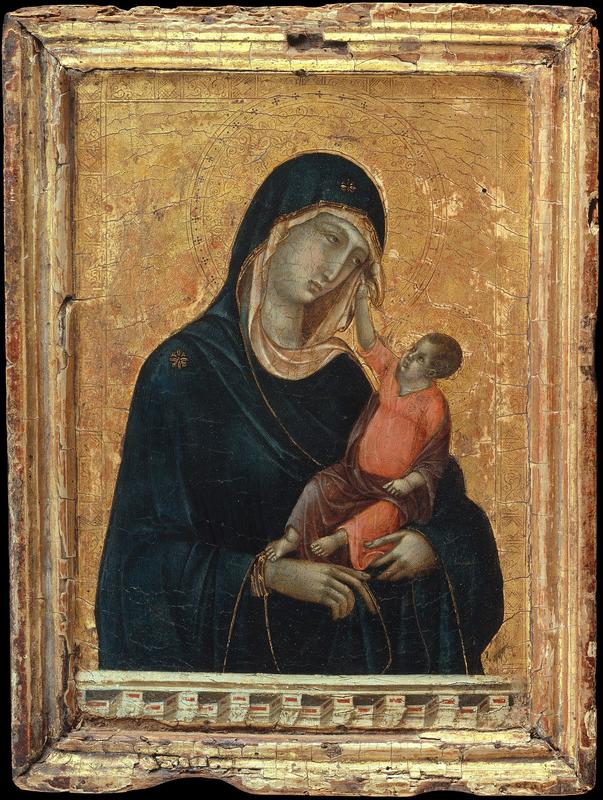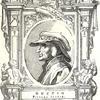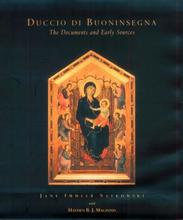More about Madonna and Child
- All
- Info
- Shop

Sr. Contributor
It seems like the only things more rare than unicorns are legitimate artworks by the late medieval painter Duccio.
Other than the ones already in museums, there are about a dozen or so Duccio paintings in private collections around the world. Besides this one, the only other Duccio in New York is at the Frick Collection, just a few blocks down 5th Avenue from the Met. This level of rarity almost makes me feel better about the $45 million price tag the painting had when the Met purchased it in 2004. Almost.
Despite its gawk-worthy cost, this painting is also intriguing for a host of other reasons. The small painting is still in its original frame, dating back to 1290. There are five known forgeries of this painting, one of which the Met purchased in 2005. I guess it’s good to keep your friends close and your enemies closer. Curators and researchers could tell this painting was the only legit one in the bunch because it was the only one that had the three-dimensional parapet painted at the bottom of the frame. It seems that Duccio and Seurat shared a love for interesting frames.
After disappearing for about six hundred years after its creation, the painting resurfaced from the depths of history in the collection of Count Gregori Stroganoff, a Russian collector in the 19th century who was obsessed with antiquities. The artwork then changed hands and entered the famed collection of Adolphe Stoclet, a Belgian banker and industrialist with a killer eye for art. In addition to Duccio, Stoclet also casually owned artworks by many other famous names, including an architectural mosaic for the dining room in his Brussels mansion by Gustav Klimt. The Met caught wind of the Duccio as Stoclet’s heirs began to auction off everything they could. Only the objects that were of Vienna Workshop origin were off-limits, as these were considered objects of natural heritage.
The Met purchased this work from the Stoclet family for $45 million in 2004, the most expensive purchase the museum had made to date – but not before a little drama could ensue. The hefty price tag didn’t seem to scare either Philippe de Montebello – the Met’s director – or trustees; after all, the museum acquired Velazquez’s Portrait of Juan de Pareja for a few million dollars in the ‘70s, decades before art selling for millions in the double and triple digits became the norm. The Getty, on the other hand, balked at the price and dropped out of the running, which then narrowed it down to the Met and the Louvre. After examining the painting for a mere two hours in the viewing room at Christie’s in London, de Montebello offered the $45 million on the spot, successfully securing it for the Met’s collection.
Sources
- The Metropolitan Museum of Art. “Madonna and Child.” Collection. https://www.metmuseum.org/art/collection/search/110003462. Accessed 28 September 2019.
- The New Yorker. “The Missing Madonna.” 18 July 2005. https://www.newyorker.com/magazine/2005/07/11/the-missing-madonna. Accessed 28 September 2019.
- Wise, Michael Z. “An Enchanted House Becomes a Family’s Curse.” The Wall Street Journal. 1 February 2012. https://www.wsj.com/articles/SB10001424052970204616504577172941334034970. Accessed 28 September 2019.
Featured Content
Here is what Wikipedia says about Madonna and Child (Duccio, Metropolitan)
Madonna and Child was painted by one of the most influential artists of the late 13th and early 14th century, Duccio di Buoninsegna. This iconic image of the Madonna and Child, seen throughout the history of western art, holds significant value in terms of stylistic innovations of religious subject matter that would continue to evolve for centuries.
Check out the full Wikipedia article about Madonna and Child (Duccio, Metropolitan)













